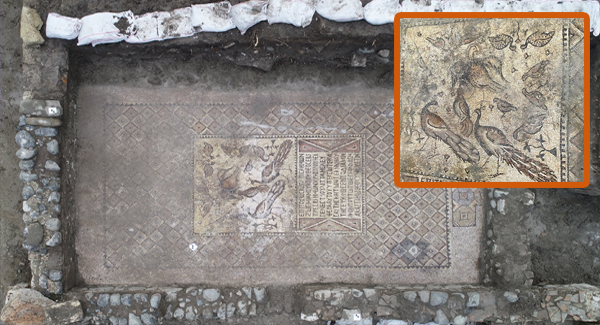On June 12, 2025, a catastrophic event shook the aviation world when Air India Flight 171, a Boeing 787-8 Dreamliner en route from Ahmedabad to London Gatwick, crashed seconds after takeoff, claiming the lives of 241 passengers and crew and 28 people on the ground. The plane, barely reaching 625 feet, suffered a rare twin-engine failure, plummeting into the dormitory of BJ Medical College. The desperate Mayday call—“no thrust”—echoed as the final communication from the cockpit. Weeks of investigation uncovered shocking details about the disaster, revealing a sequence of events that stunned the aviation industry.
The Fateful Day
The afternoon of June 12, 2025, began unremarkably at Sardar Vallabhbhai Patel International Airport in Ahmedabad. Passengers settled into their seats, flight attendants performed routine checks, and Captain Ravi Singh, with over 12,000 hours of flight experience, alongside co-pilot Emily Jiao, known for her precision with the Dreamliner, prepared for a routine flight. The Boeing 787, built in 2014 with over 5,000 flight hours, was in pristine condition, with clear skies and perfect visibility reported at 8:08 AM. Maintenance checks confirmed smooth engines, proper flaps, and functional landing gear. Nothing suggested the tragedy that would unfold.
At 1:38 PM local time, Flight AI71 took off from runway 23. Airport cameras captured the sleek aircraft climbing steadily. For the first few hundred feet, everything seemed normal. Passengers likely gazed out at the shrinking city below. Then, disaster struck. Witnesses reported the plane halting mid-air, as if hitting an invisible barrier, before stalling and plummeting. Air traffic controllers watched in horror as the plane’s signal vanished from radar after reaching 625 feet. The cockpit’s Mayday call confirmed a catastrophic loss of power in both engines at the critical climb phase.
The Devastating Impact
The Boeing 787 crashed into the BJ Medical College dormitory, its belly smashing through the roof, sending concrete fragments flying. The front section broke apart, fuel tanks exploded, and flames engulfed the wreckage, sending black smoke into the sky. Emergency crews faced a nightmarish scene: twisted metal, overturned cars, and cries for help. Firefighters battled the blaze with foam, while medical teams set up triage areas. The crash claimed 241 lives on board, including 169 Indian citizens, 53 British nationals, seven Portuguese, one Canadian, and crew from various countries. Additionally, 28 people in the dormitory perished, including former Gujarat Chief Minister VJ Rupani, intensifying national grief.
Among the heartbreaking stories was that of Hardikava and Vibhouti Patel, a newly engaged couple from Leicester, England, whose dreams were shattered days after their proposal. Their story, widely covered by global media, symbolized the profound human loss.
A Miraculous Survival
Amid the devastation, one story defied belief. Vizwashkumar Romesh, a British passenger in seat 11A, survived. As the plane stalled and emergency systems activated, Romesh found himself near an emergency exit. When the cabin split apart, he forced the door open and jumped, sustaining burns but escaping fatal injuries. His account provided critical insights into the final moments, earning his survival the label of a “miracle” by experts.
The Investigation
Within 28 hours, investigators recovered the black boxes—flight data and cockpit voice recorders—despite the scattered wreckage. The cockpit voice recorder revealed the crew’s frantic realization of power loss, with no engine whine audible, indicating a sudden failure. Theories of engine issues, flap misconfigurations, or maintenance errors emerged, but the focus settled on the rare possibility of simultaneous engine failure, a scenario pilots rarely train for due to its improbability.
The right engine, replaced three months prior, drew scrutiny. Investigators examined takeoff power settings, hydraulic lines, and fuel pumps. Early findings suggested false sensor data may have triggered a cascade of miscalculations in the flight management system. The U.S. National Transportation Safety Board, Federal Aviation Administration, Boeing, and GE Aerospace collaborated with Indian authorities, analyzing data with unprecedented urgency.
Randall, the ram air turbine’s deployment, a last-ditch effort to power critical systems, was also investigated.
Global Response and Safety Measures
India grounded all 34 Boeing 787s for rigorous inspections of engine control systems and wing joints. The European Union Aviation Safety Agency and U.S. Federal Aviation Administration issued global safety bulletins. Boeing scaled back its Paris Air Show presence to focus on the investigation, with the 787 program’s reputation at stake. New training programs for complex system failures and digital twin technology for real-time component monitoring were proposed to prevent future incidents.
Human and Environmental Aftermath
Air India and the Tata Group offered ₹1 crore ($120,000) per deceased passenger, exceeding Montreal Convention standards, plus ₹25 lakh for immediate relief. The crash site faced environmental challenges, with toxic PFAS chemicals from firefighting foam prompting soil and groundwater testing. BJ Medical College provided psychiatric support for students and faculty, addressing trauma and long-term mental health risks.
Community and Industry Impact
Ahmedabad’s citizens mobilized, with groups like Ahmedabad United using drones to map debris and aid cleanup. Air India retired flight numbers AI71 and AI172, reflecting the trauma’s depth. Prime Minister Narendra Modi visited victims, pledging a thorough investigation. Global airlines tightened maintenance and weather protocols, while memorials in Ahmedabad and Gatwick honored the 269 lives lost.
Lasting Legacy
The crash, the first fatal incident for the Boeing 787, sparked debates on composite material safety, pilot training, and supply chain oversight. Insurance payouts, estimated at ₹10,000 crore ($1.2 billion), prompted stricter standards. Academic research into material stress and aviation safety engineering surged, aiming to prevent future tragedies. The story of AI71 remains a sobering reminder of aviation’s fragility and a catalyst for systemic safety improvements, ensuring the 269 lives lost drive lasting change.























